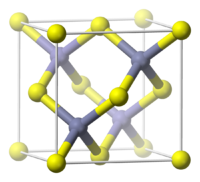
Photo from wikipedia
CERN is planning to upgrade its Large Hadron Collider to the High Luminosity phase (HL-LHC), pushing detector technologies to cope with unprecedently demanding performance in terms of particle rate and… Click to show full abstract
CERN is planning to upgrade its Large Hadron Collider to the High Luminosity phase (HL-LHC), pushing detector technologies to cope with unprecedently demanding performance in terms of particle rate and radiation hardness. The ATLAS experiment decided to equip the innermost layer (L0) of its Inner Tracker (ITk) with small-pitch 3D pixels of two different geometries, i.e., 25 µm × 100 µm for the central barrel and 50 µm × 50 µm for the lateral rings. A new generation of 3D pixels featuring these small-pitch dimensions and reduced active thickness (∼150 µm) has been developed to this purpose within a collaboration of INFN and FBK since 2014. Recently, the R&D activities have been focused on the characterization of modules based on sensors compatible with the RD53A readout chip, which were tested in laboratory and at beam lines. In this paper, we report on the characterization of modules irradiated with protons up to a fluence of 1 × 1016 neq/cm2, including threshold tuning and noise measurements, and results from beam tests performed at DESY. Moreover, we will discuss about the electrical characteristics at wafer level and at module level before and after irradiation.
Journal Title: Journal of Instrumentation
Year Published: 2021
Link to full text (if available)
Share on Social Media: Sign Up to like & get
recommendations!